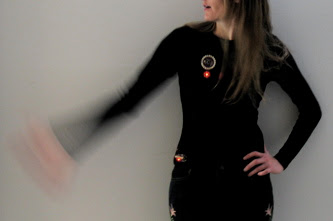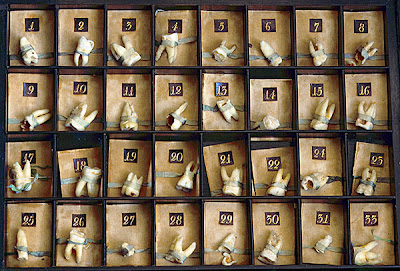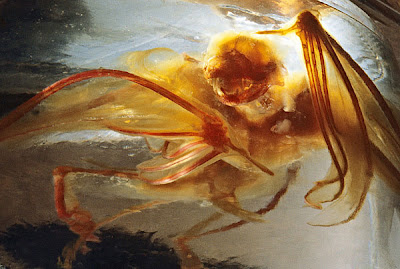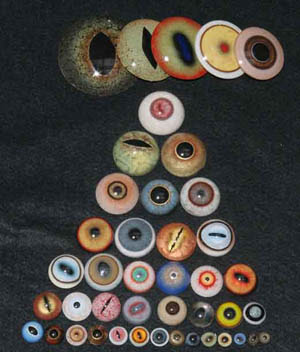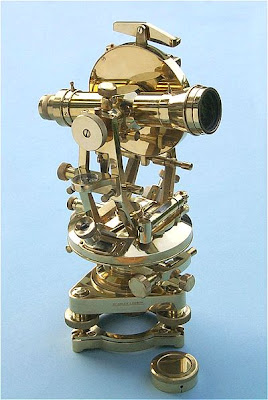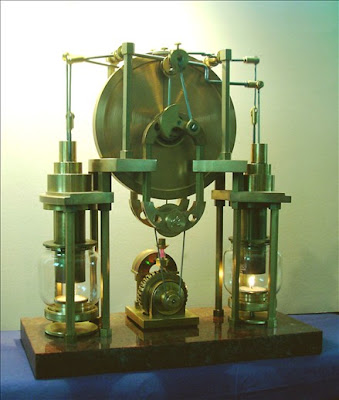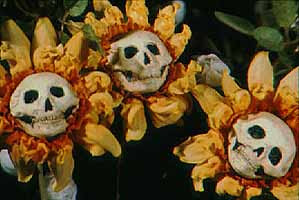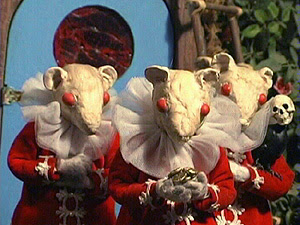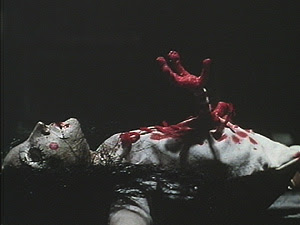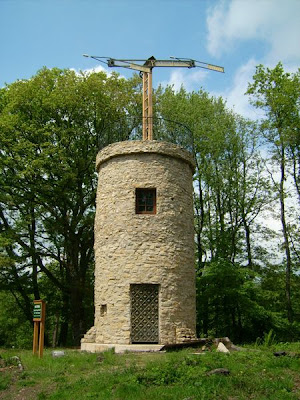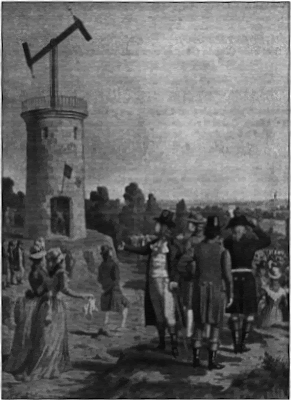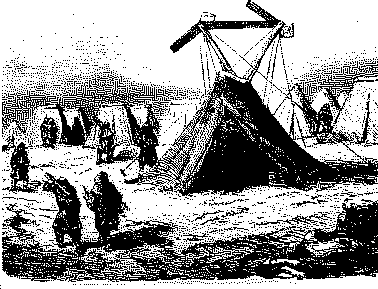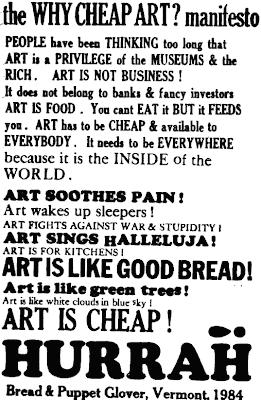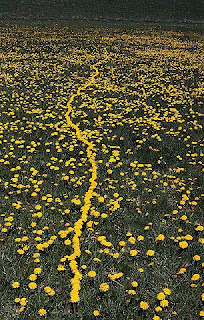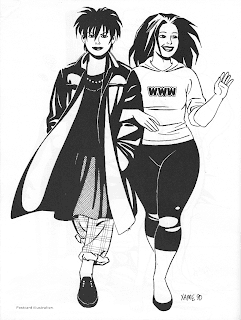Last time I was in France I tried desperately to get to the Palais Idéal du Facteur Cheval, but was unable to make the 5-hour trip from where I was staying - and have regretted it since. My parents have been several times, and brought back pictures and posters which I stare at every time I use their bathroom; but the actual experience, which by all accounts is surprisingly intimate and mysteriously private, is not mine to claim.
A Facteur is a postman, used like an honorific, and this "Ideal Palace" was built by one Ferdinand Cheval, starting when he was forty-three years old and finishing thirty-three years later. The inspiration for the building of this dream was an odd one:
"He tripped on a bizarre and beautiful stone in the road along his mail route and bent to pick it up. Looking about, he was surprised to see that such marvelous stones were scattered all around him, and he pocketed them to find a use for them at home. "From that moment," he says in a letter from 1897, "I did not sleep day or night." He continued his search on his daily 32 kilometer route (adding 10 km to search for more stones), first putting his treasures in his pockets, then in a wheelbarrow. He scoured the countryside for days and nights at a time on his mail route, sleeping in farmhouses and under the stars. He stock-piled the stones he brought back in his yard, which convinced his neighbors that he had gone mad, but he was determined to build the castle and grottoes that had populated his dreams 15 years earlier -- dreams he never told a soul about, fearing people would ridicule him. Cheval was a mailman by day and an architect by night, building his palace of stones and intricately carved concrete with little available light and no assistance from anyone." [from Kristin Fiore's fine website about same]
The Palais Idéal was put together from wire, lime, and cement, working by the light of an oil lamp. When they found out he wanted to be buried there with his wife, the local government protested and insisted he be buried in the consecrated cemetery; so at the age of seventy-six he began work on a mausoleum that took eight years to build; he died a year after he had finished it.
What is it that drives people to build these things, to express their creativity by building? Outsider art is a big thing these days, but for many, many years it was simply the expression of one person's eccentricity, often at the expense of their social credibility. Raw Vision, a journal of outsider art and folk art, had an article recently about the visionary environments found in the rare, vintage postcard collections of two collectors. Among others, there are postcards of the Palais Idéal, the Hotel of Old Plates in Seine Maritime, France, and Agnes Jones' Boneyard (see below). There are photos of the Shell Fence in Florida, The Living, Speaking Church of Mesnil-Gondouin, and the Mont-Cindre Hermitage in Rhone, France. A lot of the images in the article have a similar look: a complex, pebbly, "grown" look, like the dribble sand-castles we used to make when I was a child. They bear a remarkable resemblance to Gaudi's Cathedral in Barcelona.

The article begins this way:
"The rapid spread of photography from the late nineteenth century onwards meant that for the first time ordinary people could commission a visual record of themselves and their family in the same way as only the wealthy had been able to do before. The combination of this with the introduction of universal postal services and widespread railway travel resulted in photographs of every day scenes, popular figures, important events and local curiosities being printed and widely distributed as picture postcards. These postcards were produced in their millions but were some of the the earliest records of what are now termed as Outsider Art or Visionary Environments. Many of them have survived over the years and portray a variety of long lost creations with others that still exist to this day."
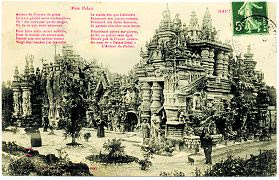
And so these eccentric creations get caught in time.
How long have people been driven to build such intimately bizarre masterpieces? Has this been a product of the modern world, or is it part of the human condition, that a certain number of the population must express themselves this way? America is sprinkled with the oddities that have sprung from the wild imaginings of a nation of frontierists, people insisting on being themselves because that's what "being American" is all about (traditionally): going your own way and having the freedom to express yourself, dammit! But I was impressed with the number of French visionary places, never mind that one of the collectors appears to be French, and it made me wonder.
And then, on looking into it, I find there are people like Nek Chand, who was a (surprise, surprise) a "humble transport official in the north Indian city of Chandigarh", who felt driven to clear a piece of jungle to make himself a garden, and then couldn't stop, going on to build several acres of courtyards with sculptures and walkways:
"After his normal working day Chand worked at night, in total secrecy for fear of being discovered by the authorities.When they did discover Chand's garden, local government officials were thrown into turmoil. The creation was completely illegal - a development in a forbidden area which by rights should be demolished. The outcome, however, was the enlightened decision to give Nek Chand a salary so that he could concentrate full-time on his work, plus a workforce of fifty labourers. Nek Chand's great work received immediate recognition and was inaugurated as The Rock Garden of Chandigarh."
Or, in Los Angeles, my favorite attraction - Watts Towers, the creation of Simon Rodia, about which the excellent film I Build The Tower was made. The towers are made of steel pipes and rods, around which wire mesh has been wrapped and coated with mortar, and decorated with mosaics made from broken bits of glass and pottery, as well as many found objects such as bed frames and seashells.
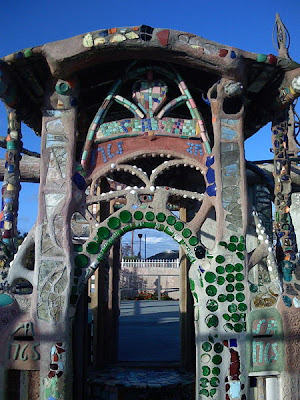
In 1959, "...the city of Los Angeles condemned the structure and ordered it razed. An actor, Nicholas King, and a film editor, William Cartwright, visited the site...[they] saw the neglect, and decided to buy the property for $3,000 in order to preserve it. When the city found out about the transfer, it decided to perform the demolition before the transfer went through. The towers had already become famous and there was opposition from around the world. King, Cartwright, and a curator of the Los Angeles County Museum of Art, along with area architects, artists, and community activists formed the Committee for Simon Rodia's Towers in Watts. The Committee negotiated with the city to allow for an engineering test to establish the safety of the structures.
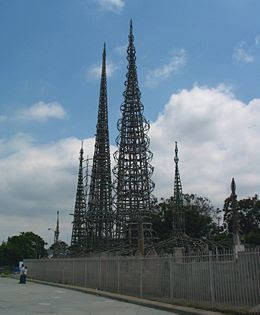
For the test, steel cable was attached to each tower and a crane was used to exert lateral force. The crane was unable to topple or even shift the towers, and the test was concluded when the crane experienced mechanical failure." [wiki]
Agnes Jones, an ex-slave known as "Aunt Aggie", built a garden in Florida with fences, arches, and trellises made from bones wired together in fanciful ways:
"Bones bordered the white-sand walkways and formed an arcade between the front gate and the Joneses' house". There was also an informal natural history museum inside, which contained snakes preserved in jars and alligator skeletons, as well as a human skeleton hung in the hallway. No human bones were ever used in the structures, however, as Aggies was quick to explain to her visitors. Visitors are said to have loved the mixture of lush flora and sepulchral structures; "they wrote their names and addresses on the bones; children gazed on the strange beauty of the place with awe and admiration. You could buy flowers and good things to eat, have your fortune told, and hear a good story or be reminded of Aggie's favorite Bible verses".
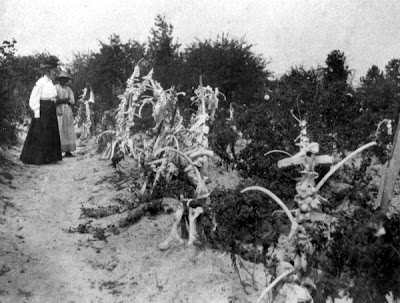
Unlike Watts' Towers, the Boneyard was torn down in 1918 to build a high school.
And did I mention bottle houses? Or tin can houses, which are being proposed as a cheap building material (not to mention their artistic qualities)? Or how about Loy Allen Bowlin, the Rhinestone Cowboy, who made incredible interiors, exteriors, and clothes? The list goes on and on of people getting creative with their environments.
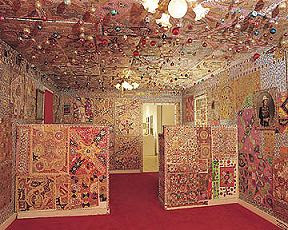
One of The Rhinestone Cowboy's interiors
I find myself thinking, reading about these fanciful places and the great sculptures, structures, doohickeys, and environments people create, and wondering how many things like this have been created - and lost - throughout history? How many of our historic and archeological discoveries are really just some eccentric's creation, lost in the sands of time? Or is it only in modern times, as the need for survival began to retreat and people had a little more leisure time, more access to materials, that people began to experiment like this?
Is it a product of mass culture, of mass-built housing and mechanized production? Or is it simply that before modernity people built what they built, and lived in it, be it eccentric or not?
Makes me want to go out and build something. There's some great rocks out back...
other links:
- Roadside America's links to Florida oddities
- Anna's Bottle House, a funky and interesting inn near Tucson, Arizona - built of bottles







